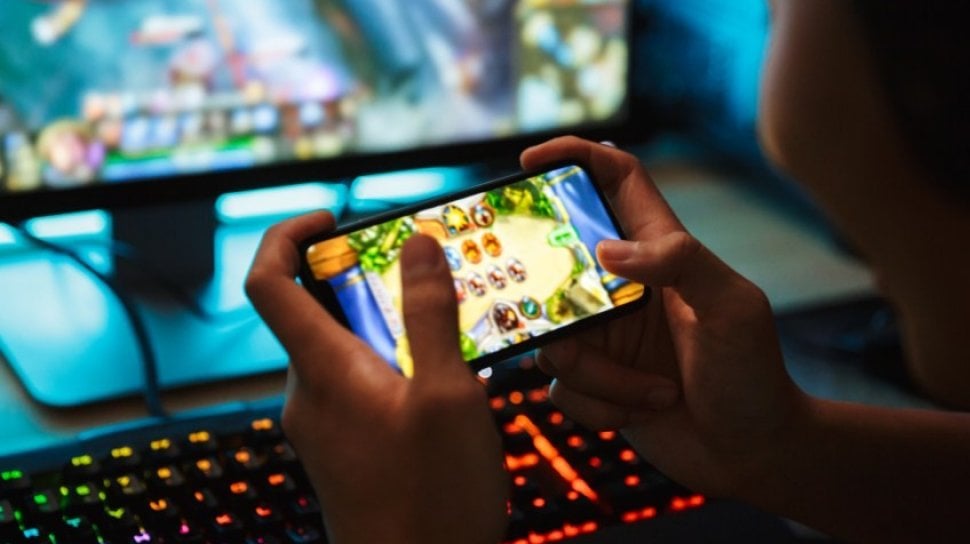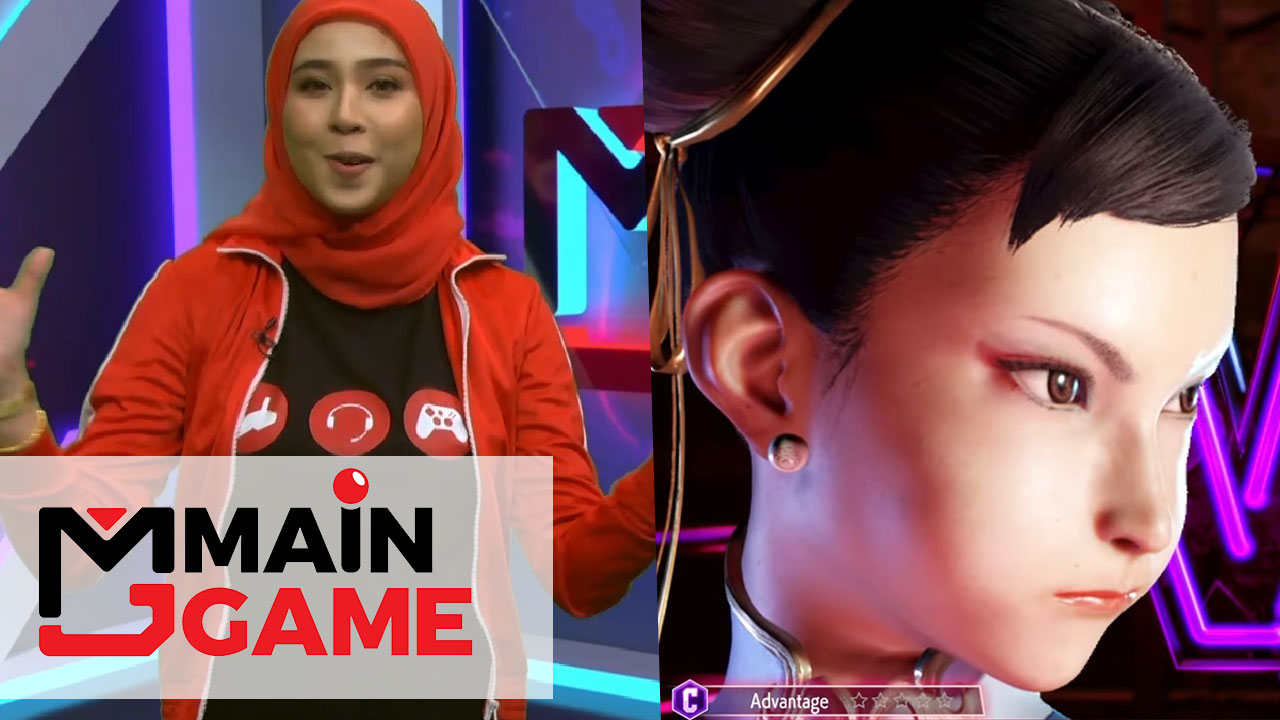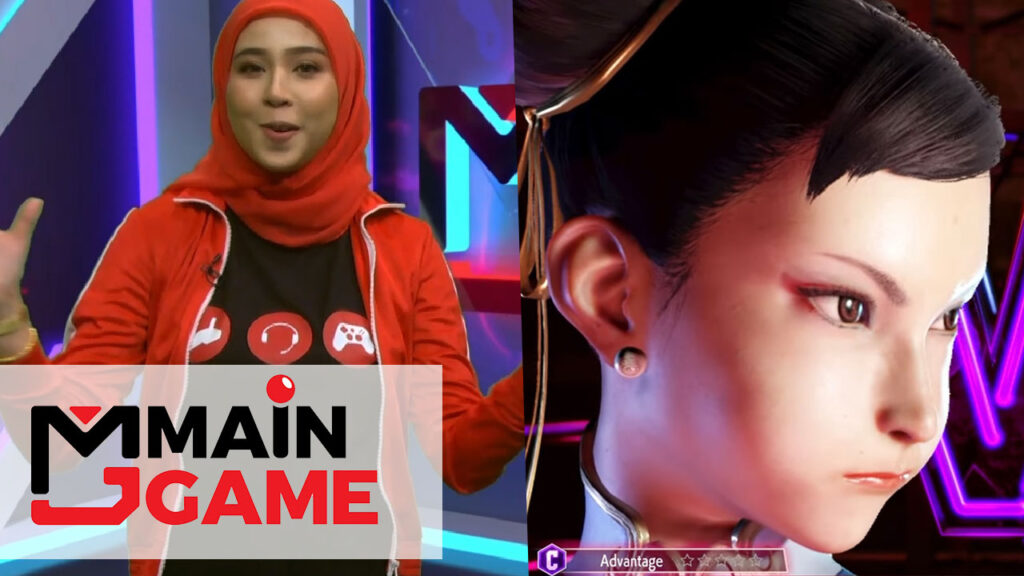Mainkan game encapsulates a vibrant tapestry of cultural significance, revealing how games have transcended mere entertainment to become integral to societal interaction. Across various cultures, the act of playing games has evolved from traditional board and card games to the immersive digital experiences we know today. A myriad of genres, from action-packed adventures to strategic challenges, now caters to diverse interests and demographics, showcasing the dynamic nature of gaming in contemporary society.
This evolution not only highlights the richness of gaming experiences available today but also reveals its potential for fostering connections and enhancing mental well-being. With advancements in technology, the gaming landscape has transformed, presenting players with an array of options that cater to personal preferences and social engagement.
Introduction to ‘Mainkan Game’
Playing games has always been a vital part of human culture, serving as a medium for entertainment, education, and social interaction across various societies. The significance of games can be seen in their ability to unite people, foster strategic thinking, and encourage collaboration. Throughout history, games have reflected the values and traditions of the cultures they originate from, emphasizing the human desire for challenge and creativity.
The evolution of gaming has undergone remarkable changes, transitioning from traditional board games and outdoor sports to an expansive digital landscape. In earlier times, games such as chess and dice games were played in social gatherings, often conveying moral lessons or reflecting societal norms. Today, the gaming industry encompasses a wide range of formats, including video games, mobile games, and online multiplayer experiences, significantly enhancing accessibility and participation.
Types of Games Available Today
The variety of games available today caters to diverse preferences and interests, each offering unique experiences and challenges. Understanding these categories can enhance one’s appreciation for the complexity and creativity involved in game design. Below are the primary types of games that are widely enjoyed:
- Video Games: These are electronic games played on consoles, computers, or mobile devices. They range from single-player adventures to complex multiplayer environments, such as massively multiplayer online role-playing games (MMORPGs) like World of Warcraft.
- Board Games: Classic and contemporary board games continue to thrive, offering strategic and social interaction experiences. Examples include Settlers of Catan and Ticket to Ride, which are designed for diverse age groups and player counts.
- Card Games: Card games like Poker and Magic: The Gathering not only require skill and strategy but also involve elements of chance, testing players’ decision-making abilities in real-time.
- Sports: Traditional sports such as soccer and basketball are played worldwide, emphasizing teamwork, physical capability, and competition, often bringing communities together.
- Mobile Games: The rise of smartphones has led to the popularity of mobile games, making gaming more accessible through casual titles like Candy Crush and Clash of Clans.
The diverse landscape of games today reflects the ongoing innovation in gameplay mechanics, storytelling, and technology, ensuring that gaming remains a significant aspect of modern culture. The ability to connect people from different backgrounds and facilitate shared experiences is a testament to the enduring appeal of games in all their forms.
Types of Games to Play
In the ever-evolving world of gaming, understanding the various types of games available can greatly enhance your gaming experience. With genres spanning from action-packed adventures to strategic simulations, choices abound for all kinds of players. This section will break down the different genres of games, the distinctions between mobile and console or PC gaming, and the pros and cons of playing online versus offline games.
Genres of Games
Game genres categorize the vast landscape of gaming experiences. They serve as a guide to help players choose what suits their interests best. Here are some of the most prominent genres:
- Action Games: These games emphasize physical challenges and hand-eye coordination. Examples include platformers like “Super Mario” and shooters like “Call of Duty”.
- Adventure Games: These games focus on story-driven experiences, often requiring players to solve puzzles. Titles like “The Legend of Zelda” and “Life is Strange” are fan favorites.
- Role-Playing Games (RPGs): RPGs allow players to assume the roles of characters in a fictional setting, often involving complex storylines and character development. Popular examples are “Final Fantasy” and “The Witcher”.
- Strategy Games: These games require players to use strategic thinking to manage resources or defeat opponents. Well-known titles include “Civilization” and “StarCraft”.
- Simulation Games: Simulation games mimic real-world activities, providing players with detailed scenarios. Examples include “The Sims” and “Microsoft Flight Simulator”.
- Sports Games: These games simulate real-world sports and include titles like “FIFA” and “NBA 2K”.
- Puzzle Games: Focusing on problem-solving, these games challenge players to think critically, with classics like “Tetris” and “Candy Crush”.
Mobile Games versus Console/PC Games, Mainkan game
The gaming landscape is also defined by the platforms on which games are played. Mobile games and console/PC games have unique characteristics that cater to different audiences.
Mobile games, typically played on smartphones or tablets, offer convenience and accessibility. They often feature shorter play sessions, making them ideal for casual gamers. Titles like “Clash of Clans” and “Among Us” highlight the engaging experiences available on mobile devices.
On the other hand, console and PC games provide a more immersive experience, often featuring advanced graphics and complex gameplay mechanics. These games cater to serious gamers who enjoy longer, more involved sessions. Examples include “Red Dead Redemption 2” and “Cyberpunk 2077”.
The choice between mobile and console/PC gaming often boils down to personal preference and lifestyle. Mobile gaming is perfect for on-the-go entertainment, while console/PC gaming offers in-depth experiences with richer graphics and gameplay.
Online Games versus Offline Games
The distinction between online and offline games is crucial in determining the gaming experience. Both formats offer unique advantages and disadvantages.
Online games enable players to connect with others worldwide, fostering social interactions and competitive play. Multiplayer titles like “Fortnite” and “World of Warcraft” exemplify this connected experience, where players can collaborate or compete against one another in real-time.
However, online games often require a stable internet connection and can be susceptible to issues like lag or server downtime. They may also involve in-game purchases, which can be a drawback for some players.
In contrast, offline games allow players to enjoy a complete experience without needing an internet connection. Single-player games like “God of War” and “The Last of Us” deliver compelling narratives and gameplay that can be fully experienced offline. However, they may lack the social elements found in online games.
Ultimately, the choice between online and offline gaming depends on personal preferences regarding social interaction, gameplay style, and accessibility.
Popular Gaming Platforms

The gaming landscape is continually evolving, with various platforms offering unique experiences. Understanding these platforms is vital for gamers who want to make informed choices about where to invest their time and money. This section will delve into popular gaming consoles and the rise of mobile gaming applications, highlighting their features, advantages, and offerings.
Features and Advantages of Popular Gaming Consoles
Gaming consoles have long been at the core of the gaming experience, providing dedicated hardware for optimal performance. The leading consoles include PlayStation and Xbox, each with distinct features and benefits.
- PlayStation 5: The PS5 boasts powerful hardware, including a custom SSD for lightning-fast load times, advanced graphics capabilities, and a robust library of exclusive titles such as “Demon’s Souls” and “Ratchet & Clank: Rift Apart.” The DualSense controller features adaptive triggers and haptic feedback, immersing players deeper into their gaming experiences.
- Xbox Series X: Known for its backward compatibility, the Xbox Series X allows players to enjoy games from previous generations. It features Game Pass, providing access to a vast library of games for a monthly subscription, enhancing the gaming value. The console’s Quick Resume feature enables players to switch between multiple titles seamlessly.
Impact of Mobile Gaming Applications on the Gaming Landscape
Mobile gaming has transformed how players engage with games, making them more accessible than ever. With the proliferation of smartphones, mobile gaming applications have introduced various genres and experiences that appeal to a broader audience.
Mobile games like “PUBG Mobile,” “Genshin Impact,” and “Candy Crush Saga” have achieved significant success by leveraging social connectivity and microtransactions. As of 2023, mobile gaming accounts for over 50% of the global gaming market, illustrating its impact. Developers are continuously enhancing graphics, gameplay mechanics, and monetization strategies, which have led to significant revenue generation within the industry.
Top Online Gaming Platforms and Their Unique Offerings
The rise of online gaming platforms has transformed multiplayer gaming, offering diverse experiences that connect players worldwide. Below is a list of some of the leading online gaming platforms, each with unique features that cater to various gaming preferences.
- Steam: A digital distribution platform known for its extensive library of games, frequent sales, and community features like user reviews and forums. Steam also supports modding, allowing players to enhance their gaming experiences.
- Epic Games Store: Offers exclusive titles and a user-friendly interface, along with regular free game giveaways. Epic’s focus on supporting developers with better revenue sharing has attracted a plethora of indie games.
- Origin: EA’s gaming platform provides access to popular franchises like “The Sims” and “FIFA.” The subscription service, EA Play, grants access to a rotating library of games for a monthly fee.
- Battle.net: Blizzard Entertainment’s platform features popular titles such as “World of Warcraft,” “Overwatch,” and the “Call of Duty” series. Its integrated social features and competitive matchmaking enhance multiplayer experiences.
- Xbox Live: Beyond just online multiplayer, Xbox Live Gold offers free monthly games and exclusive discounts on the Xbox Store. Its integration with Xbox Game Pass elevates the overall gaming experience.
Community and Social Aspects of Gaming

The world of gaming extends beyond mere entertainment; it serves as a vibrant platform for social interaction and community building. As players engage in various gaming environments, they form connections that transcend geographical boundaries. This aspect of gaming fosters a sense of belonging, camaraderie, and shared experiences among participants, creating a rich tapestry of social dynamics.
Gaming communities play a pivotal role in connecting players with similar interests and enhancing the overall gaming experience. These communities can range from informal groups of friends to organized online platforms. The rise of multiplayer games has been instrumental in this regard, enabling players to interact, collaborate, and compete with one another in real-time. Through voice chats, forums, and social media, gamers can share strategies, celebrate victories, and support each other during challenges.
Impact of Multiplayer Games on Social Interaction
Multiplayer games are designed to enhance social interaction among players, contributing significantly to the gaming landscape. The inherent structure of these games encourages collaboration and competition, which are essential for building relationships. Players often join forces to tackle challenges, complete quests, or engage in battles, fostering teamwork and communication.
The following factors illustrate the impact of multiplayer games on social interaction:
- Formation of Friendships: Many players develop lasting friendships through shared gaming experiences, often leading to real-life meet-ups and connections.
- Community Events: Multiplayer games frequently host events such as tournaments, seasonal challenges, and in-game celebrations, providing opportunities for players to interact on a larger scale.
- Support Systems: Players often provide emotional and tactical support to one another, creating a nurturing environment that enhances the gaming experience.
Differences Between Casual Gaming and Competitive Gaming Communities
The gaming community can be broadly categorized into casual and competitive segments, each with distinct characteristics and social dynamics. Understanding these differences can illuminate how players engage with one another and the broader gaming culture.
Casual gaming communities typically prioritize enjoyment and relaxation over competition. These players often engage in games that are easy to pick up and play, creating a laid-back atmosphere. On the other hand, competitive gaming communities focus on skill development, ranking, and tournaments, fostering a more intense environment where players constantly strive to improve.
Key distinctions between the two communities include:
- Purpose: Casual gamers seek fun and leisure, while competitive gamers aim for mastery and achievement.
- Player Interaction: Casual communities emphasize socializing and sharing experiences, whereas competitive communities often rely on strategic collaboration and rivalry.
- Game Selection: Casual gamers may gravitate towards titles with straightforward mechanics, while competitive gamers prefer games that require skill and strategy.
The Psychology of Gaming

The relationship between gaming and psychology is a multifaceted one, revealing both the potential benefits and drawbacks of playing video games. As the gaming industry continues to grow, so too does our understanding of how this medium influences mental health and cognitive processes. The psychology of gaming encompasses various aspects, from the flow state experienced during immersive gameplay to the therapeutic applications of games in enhancing well-being and cognitive development.
Impact on Mental Health
Playing games can significantly influence mental health, presenting both positive and negative outcomes. Engaging in video games can provide a temporary escape from reality, allowing players to immerse themselves in alternate worlds and narratives. This escapism can serve as a coping mechanism for stress and anxiety, offering players a chance to unwind and relax. Furthermore, certain games promote social interaction, fostering a sense of community that can combat feelings of isolation.
However, excessive gaming may lead to negative consequences, including addiction, increased aggression, and social withdrawal. Recognizing the balance between healthy gaming and detrimental habits is crucial for maintaining mental well-being. Notably, studies have shown that moderate gaming can enhance mood and cognitive function, while excessive playtime has been linked to declines in mental health.
Flow State in Gameplay
The concept of flow state is a psychological phenomenon that describes a state of complete immersion and peak performance experienced during gameplay. When players reach this state, they often lose track of time and become fully engaged in the game, finding joy and satisfaction in their actions. Achieving flow is marked by several key characteristics:
- Intense Focus: Gamers exhibit heightened concentration, fully dedicating their attention to the task at hand.
- Loss of Self-Consciousness: Players experience a diminished sense of self, allowing them to engage deeply with the game.
- Matching Skill Levels: Flow occurs when challenges within the game align with the player’s skill level, creating a perfect balance that keeps players motivated.
- Intrinsic Motivation: The joy of playing becomes its own reward, leading to sustained engagement and satisfaction.
Experiencing flow can enhance enjoyment and learning within games, facilitating skill acquisition and overall cognitive development. The psychological benefits of reaching flow can extend beyond gaming, helping players apply these experiences to real-life challenges.
Therapeutic Uses of Gaming
Gaming has emerged as a valuable tool in therapeutic settings, offering innovative approaches to stress relief and cognitive enhancement. The interactive nature of games makes them suitable for therapeutic applications, as they can engage individuals in ways traditional methods cannot. Key therapeutic uses include:
- Stress Relief: Many games are designed to be relaxing or immersive, helping players to unwind and reduce anxiety.
- Cognitive Development: Action games, puzzle games, and problem-solving scenarios can improve cognitive skills, such as memory, attention, and spatial awareness.
- Social Skills Enhancement: Multiplayer games encourage teamwork and communication, benefiting individuals with social anxiety or autism spectrum disorders.
- Emotional Regulation: Games can aid in exploring emotions, providing players with a safe space to confront and manage feelings.
Games that incorporate therapeutic principles, such as “Journey” and “That Dragon, Cancer,” have received acclaim for their ability to provoke thought and emotional responses, illustrating gaming’s potential as a medium for healing and understanding.
Game Development and Design
Game development and design is a multifaceted process that combines creativity, technology, and art to bring interactive experiences to life. The journey from concept to finished product requires careful planning, collaboration, and an understanding of the gaming audience. This segment explores the key steps involved in game development, delves into the mechanics that make games engaging, and highlights the significance of storytelling in creating immersive experiences.
Key Steps in the Game Development Process
The game development process is typically structured in several key phases, each playing a crucial role in the overall success of the game. Understanding these stages helps developers manage resources effectively and achieve their creative vision.
- Concept Development: This initial phase involves brainstorming ideas, defining the game’s vision, and creating a game design document. This document Artikels the game’s mechanics, story, art style, and target audience.
- Pre-production: In this stage, the development team focuses on planning the project in detail. This includes creating prototypes, defining the technology stack, and establishing a budget and timeline.
- Production: The most labor-intensive phase, production involves coding, creating art assets, designing levels, and incorporating sound. Teams work collaboratively to develop the game as Artikeld in the design document.
- Testing: Quality assurance is critical in this phase. Playtesting identifies bugs and gameplay issues, ensuring that the game is polished and provides a seamless experience. Feedback from testers is crucial for improvements.
- Release: After rigorous testing, the game is launched on selected platforms. This phase includes marketing and creating buzz around the game to attract players.
- Post-launch Support: Post-release, developers often provide updates, bug fixes, and additional content based on player feedback to keep the community engaged and enhance the game experience.
Game Mechanics and Their Importance
Game mechanics are the rules and systems that govern gameplay, determining how players interact with the game world. Understanding these mechanics is vital for creating engaging and rewarding experiences for players.
Game mechanics can be categorized into several types, each influencing player engagement and satisfaction:
- Rules: Establish the framework within which players operate. Clear rules ensure that players understand how to achieve their objectives.
- Goals: Provide players with objectives that drive engagement. Whether it’s completing a level, defeating a boss, or achieving a high score, goals motivate players to continue playing.
- Feedback: Instant feedback informs players of their progress and success, reinforcing positive behavior and encouraging them to improve their skills.
- Challenges: Effective challenges strike a balance between difficulty and skill level, maintaining player interest and preventing frustration.
- Rewards: Rewards such as points, new abilities, or unlockable content create a sense of accomplishment and encourage continued play.
“Game mechanics form the backbone of engaging gameplay, creating a dynamic interaction between the player and the game world.”
Role of Storytelling and Narrative in Engaging Players
Storytelling is a fundamental aspect of game design that significantly enhances player immersion and emotional investment. A compelling narrative can transform a simple gameplay experience into a memorable journey.
Engaging players through storytelling involves several key elements:
- Character Development: Well-crafted characters with relatable motivations and arcs allow players to form emotional connections, deepening their investment in the game’s outcome.
- World-Building: A richly developed game world provides context and enhances the narrative. Detailed environments with lore invite exploration and discovery.
- Plot Structure: A well-structured plot with rising action, climax, and resolution keeps players engaged. Twists and turns in the story can enhance excitement and surprise.
- Player Agency: Allowing players to make choices that influence the story can lead to varied outcomes, making each playthrough unique and enhancing replayability.
“A strong narrative not only captivates players but also enriches the overall gaming experience, fostering a connection that can transcend the gameplay itself.”
Future Trends in Gaming: Mainkan Game
The gaming industry is continuously evolving, showcasing a remarkable capacity for innovation and adaptation. As technology advances, new trends emerge that shape the landscape of gaming, influencing how games are designed, played, and monetized. Understanding these future trends is essential for players, developers, and investors alike, as they signal significant shifts in the gaming ecosystem.
Virtual Reality and Augmented Reality
Virtual reality (VR) and augmented reality (AR) are set to revolutionize the gaming experience by immersing players in interactive environments that blur the line between the digital and physical worlds. VR creates a fully immersive experience through headsets and motion tracking, allowing players to engage with games in ways previously unimaginable. AR, on the other hand, overlays digital elements onto the real world via devices like smartphones and AR glasses, enhancing gameplay with real-world interactions.
- VR gaming is projected to grow significantly, with the market size anticipated to reach over $44 billion by 2024, according to industry reports.
- AR games like Pokémon GO have demonstrated the potential for massive player engagement, utilizing real-world locations to enhance gameplay.
- Innovative hardware, such as the Oculus Quest and Valve Index, is improving accessibility to high-quality VR experiences.
- Upcoming titles are increasingly incorporating these technologies, paving the way for new game genres focused on immersive storytelling and social interaction.
Impact of Artificial Intelligence on Game Design
Artificial intelligence (AI) is poised to transform game design by introducing more dynamic and responsive gameplay experiences. AI can enhance non-player character (NPC) behavior, making them more lifelike and challenging. It can also streamline the game development process, optimizing everything from graphics rendering to player matchmaking.
- AI-driven procedural content generation allows developers to create vast game worlds that evolve based on player actions, enhancing replayability.
- Machine learning algorithms can analyze player data to personalize game experiences, tailoring challenges and rewards to individual players.
- AI-powered tools are reducing development time, enabling smaller studios to produce high-quality games that compete with larger companies.
- Future games may feature AI companions that learn and adapt to a player’s style, creating a more engaging and unique gameplay experience.
Evolution of Player Engagement and Monetization Strategies
As gaming continues to attract diverse audiences, engagement and monetization strategies are evolving to meet the demands of players. The rise of mobile gaming and free-to-play models has shifted how games are marketed and monetized, emphasizing ongoing player engagement and community involvement.
- Game developers are increasingly adopting subscription models, similar to platforms like Xbox Game Pass, to provide players with access to a wide array of games for a monthly fee.
- Microtransactions have become a prevalent monetization strategy, allowing players to purchase in-game items or enhancements, which can drive significant revenue when implemented thoughtfully.
- Live service games, which receive regular updates and new content, keep players engaged over longer periods, enhancing community interaction and loyalty.
- Esports and streaming platforms are creating new revenue streams, with players and influencers generating income through sponsorships, advertising, and merchandise sales.
Impact of Gaming on Society

The impact of gaming on society is extensive and multifaceted. While often criticized for potential negative effects, gaming also plays a significant role in education, social interaction, and cultural expression. As the gaming industry evolves, so does its influence on various aspects of daily life, highlighting both its benefits and challenges.
Educational and Skill Development Benefits
Games have increasingly become tools for education and skill development, providing interactive and engaging ways to learn. Various games are designed with specific educational goals in mind, demonstrating their potential beyond mere entertainment. For instance, platforms like Kahoot! and Minecraft: Education Edition allow students to collaborate and explore complex subjects in immersive environments.
- Problem-Solving Skills: Puzzle and strategy games like Portal and The Witness challenge players to think critically and develop problem-solving strategies. These games encourage players to approach challenges from multiple angles and devise innovative solutions.
- Collaboration and Teamwork: Multiplayer games such as Overwatch and Fortnite require players to work together to achieve common objectives, fostering communication and teamwork skills essential in both educational settings and the workplace.
- Remote Learning: During the COVID-19 pandemic, educational games provided a means for students to engage with learning materials outside of traditional classroom settings. This trend has shown how effectively games can supplement educational curricula.
Gaming Addiction and Health Recognition
Gaming addiction has gained recognition as a significant health issue by organizations like the World Health Organization (WHO), which classified it as a mental health disorder in its International Classification of Diseases (ICD-11). This classification underscores the need for awareness and understanding of the potential risks associated with excessive gaming.
“Gaming disorder is characterized by a pattern of persistent or recurrent gaming behavior, which may be online or offline, manifested by impaired control over gaming.”
The implications of gaming addiction can be profound, affecting not just the individual but also their families and communities. Symptoms can include social withdrawal, neglect of personal responsibilities, and deterioration of physical health. As society becomes more aware of these consequences, there is a growing need for effective prevention and intervention strategies.
Cultural Impact of Gaming Compared to Other Entertainment Forms
The cultural impact of gaming is significant, rivaling that of film, music, and literature. Video games have become a dominant form of storytelling and artistic expression, influencing popular culture in diverse ways. They provide a platform for narratives that resonate with audiences, often addressing complex themes and social issues.
- Storytelling and Narrative Depth: Games like The Last of Us and Red Dead Redemption 2 are celebrated not just for their gameplay but for their intricate storylines and character development, paralleling the depth often found in novels and films.
- Community Building: Online gaming fosters communities that can transcend geographical boundaries. These communities often engage in discussions, create content, and support each other, similar to fan cultures surrounding movies or music.
- Representation and Diversity: The gaming industry is increasingly focused on representation, with games showcasing diverse characters and narratives, contributing to broader cultural conversations about identity and inclusion.
As the gaming landscape continues to evolve, understanding its impact on society becomes increasingly vital. The balance of harnessing its educational potential while addressing the risks of addiction will shape the future of gaming culture.
Tips for Responsible Gaming
Gaming can be an enjoyable pastime, but it is essential to approach it responsibly. Responsible gaming ensures that the experience remains fun and does not interfere with daily life or responsibilities. By adopting effective strategies, gamers can manage their gaming time, maintain a healthy balance between gaming and other activities, and promote safe gaming environments for children.
Effective Time Management Strategies
Managing gaming time effectively is crucial to ensure it does not take precedence over other important activities in life. Here are some strategies to help gamers stay on track:
- Set a gaming schedule: Allocate specific times for gaming and stick to them. This helps to avoid excessive playtime.
- Use timers: Set a timer to limit gameplay sessions, ensuring breaks are taken to prevent fatigue and maintain focus.
- Track gaming hours: Keep a log of gaming hours to get a clear picture of how much time is spent gaming, which can encourage moderation.
- Prioritize responsibilities: Before gaming, complete essential tasks like homework, chores, or work commitments to ensure responsibilities are met.
- Engage in other hobbies: Balance gaming with other interests, such as sports, reading, or socializing, to promote a well-rounded lifestyle.
Maintaining Balance Between Gaming and Life
A healthy balance between gaming and other life activities is vital to overall well-being. Gamers should consider the following tips to achieve this balance:
- Limit daily gaming time: Aim for a maximum of 1-2 hours of gaming a day to ensure it does not dominate free time.
- Schedule family time: Make time for family activities that do not involve gaming, fostering connections and strengthening relationships.
- Practice physical activity: Incorporate regular exercise into daily routines to promote physical health alongside gaming.
- Encourage social interactions: Engage with friends and family in person to create a supportive social environment outside of gaming.
Parental Guidance in Children’s Gaming Habits
Parents play a crucial role in shaping their children’s gaming experiences. Establishing guidelines and promoting responsible gaming habits can help ensure a positive gaming environment. Important aspects include:
- Set age-appropriate limits: Understand game ratings and ensure children play age-appropriate games to avoid exposure to unsuitable content.
- Monitor gameplay: Regularly check on children’s gaming habits and the time spent playing to maintain awareness of their gaming activities.
- Discuss gaming content: Talk to children about the games they play, encouraging them to share their experiences and thoughts on game themes.
- Encourage breaks: Remind children to take breaks during extended gaming sessions to reduce fatigue and promote healthy gaming practices.
- Be a role model: Demonstrate responsible gaming behaviors, such as moderation and prioritizing life responsibilities over gaming.
Conclusive Thoughts
In summary, gaming is much more than a pastime; it reflects cultural narratives and influences social interactions across different communities. As we navigate the complexities of game design, community dynamics, and future trends, it becomes clear that the impact of gaming extends into education, mental health, and social connection. Embracing responsible gaming practices ensures that we can enjoy these experiences while maintaining a healthy balance in our lives.
Gaming enthusiasts will find a treasure trove of fun at friv2017. This platform offers a variety of engaging games that cater to all interests, making it an ideal destination for casual gamers. Whether you’re into action, puzzles, or adventure, friv2017 has something to keep you entertained for hours. Dive in and explore the vast selection that awaits you!
If you’re looking for a fun way to pass the time, friv2017 offers a great selection of online games that cater to all age groups. From action-packed adventures to brain-teasing puzzles, there’s something for everyone. The platform’s user-friendly interface makes it easy to dive into exciting gameplay without any hassle.


